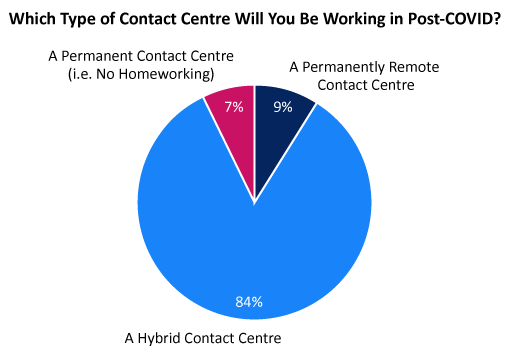We investigate what should be included in a call centre plan and highlight some of the key fundamentals.
What Is the Aim of a Call Centre Business Plan?
A call centre business plan is a high-level document that is the first stage of setting up a call centre. It describes the purpose of the call centre and outlines the objectives, benefits and costs together with an indication of some of the components.
If you are bidding to create a contact centre within your own organization – whether that’s for service, sales or both – your call center business model will be aimed at internal stakeholders.
However, if you’re looking to create a new outsourced contact centre, your business plan may instead be aimed at investors, who you will need to help fund your operation – through the early days at least!
“In the plan, you will set out a number of options – around things like location, recruiters and technology suppliers. You are looking for approval to dig deeper into these options,” adds Martin Jukes, Managing Director at Mpathy Plus.
A Business Plan Will Cover a Number of Areas Including:
- Purpose
- Benefits
- Governance
- Customer Experience
- Location
- People and Technology
- Return on Investment (ROI)
- Risk Assessment
It is important to keep in mind that your business plan will have three main audiences:
- Those stakeholders or potential sponsors (as already discussed)
- Those already tasked with building
- Those tasked with justifying
Start Your Plan With a Purpose – Set Around Key Objectives
Start off your business proposal by highlighting the purpose and objectives of the call centre.
Highlight your key arguments, using simple language, which will capture the attention of your investors early. Bullet points that set out your thoughts in a logical manner may be all that you need here.
The key is to make straightforward statements like:
“We’re spending £2 million every year in serving customers, in a disparate manner, across the organization. If we spend £1 million setting this up and £1 million a year on resourcing the call centre, then we’re going to get a return on investment fairly quickly, while providing a better customer experience.”
You then expand upon these arguments later, as you are setting up the rest of the business plan, which will highlight how you plan to deliver a call centre to meet your objectives.
Some other simple objectives that you might want to build a business plan for a call centre around – for a service operation – could be:
Possible Objectives For a Call Centre Business Plan:
- Furthering Revenue
- Improving Customer Experience
- Generating Campaigns
- Increasing Technical Support for New Products
- Enabling Growth
These are some quick examples, which could be expanded into solid objectives. However, these could be quite different from those used in a sales or outsourced contact centre.
What Else Needs to Be Included in a Contact Centre Business Plan?
While you may wish to add other elements into your business plan, here are some of the absolute must-haves, which need their own sections within your proposal.
Benefits
How will a new contact centre benefit your organization? List all of the benefits in this section to underline the value of your new call centre.
In this section, start by reiterating your “headline” objectives, but also talk about some of the other benefits that call centre could bring – which may also help to swing your stakeholders.
Some of the benefits that are easy to overlook when creating a business plan include:
A Business Plan Will Cover a Number of Areas, Including:
- Call analysis and more data that will tell you more about your customers
- Continuous improvement of customer service (with the right team)
- Extended service hours
- Improvement of your organization’s image
- Saving time of others in the business, who currently take calls as part of their job
Governance
Before you get into agent recruitment, locations and technology considerations you need to specify who will oversee the implementation of the contact centre, provide advice and troubleshoot. Who will be in the project’s steering group?
Plans are often built in project mode – i.e. to get to a defined result in a defined time at a defined budget.
It’s the wrong mindset.
Once you’ve come up with your key objectives, you need to start with “who?”, according to Peter Massey, Managing Director at Budd.
“You need to be clear how it will run, not how it will get built. So how do you get customers’ and operations’ needs to drive scope and acceptability of your plan? The people you are building for need to be involved right along,” says Peter.
“So many new call centre plans don’t survive their first owner – the person who comes in to run a business in it. That disconnect is a real risk.”
This is especially true in fast-growing businesses where the team is being recruited right the way through.
Customer Experience Considerations
An important consideration when planning for a new contact centre is: what will our service look like from a customer’s perspective?
If one of your objectives is to increase revenue through great service, this is particularly important, as you need to highlight the actions that you want to take which will enable you to achieve that.
The idea here is to create a vision of the customer experience that the call centre will deliver. This vision will help to stitch together your technology, location and recruitment options that you present to your stakeholders later in the business plan.
You may also want to consider: why do customers contact us? Do you plan to automate, simplify or even eliminate some of those contacts in the call centre? If so, how will that impact customer experience for the better?
In this section of your call centre business plan, another important consideration is: how will we measure success?
If your key objective is to save money, revenue statistics may be all you need. However, if you’re looking to further revenue via improved service and sales, you might need to introduce and explain how you will use measures like:
- Customer Effort
- Customer Emotion
- First Contact Resolution
- Customer Satisfaction
- Net Promoter Score
- Sales Volumes
The metrics that you track, and how you do so, should align with your vision for customer experience.
Location – Along With Branding and Furnishing
If you are looking to run a traditional brick-and-mortar call centre, you will likely present three or four different options for location and note that they will cost x, y and z.
The options that you put forward will depend on things like the availability of suitable resource. Do you want to go near competing organizations where you can potentially poach good staff? Or do you want to stay away from organizations that may want to poach members of your team?
Other factors in your decision may include grant availability, cost of accommodation, office space and, of course, availability.
There is also the matter of the location fitting your brand, and branding in itself is a key thought to have, according to Martin.
“Your contact centre is a representation of your brand, and for many customers it is what they see and experience more than anything else. So you need your call centre to demonstrate what you are about as an organization,” says Martin.
With this in mind, when you are looking at possible locations, you will need to look for costs to furnish, brand and maintain the place, so it not only reflects your company, but also becomes a nice place to work.
A Quick Point on Remote Working
If you are wanting to put together a remote contact centre, furnishing, branding etc. will be less of a consideration – but there will be other costs that you need to consider, such as:
- Insurance
- Tax
- Liability /employee
- IT and internet
- Workstations
On top of that, with remote working you will have to think more about setting the right working practices and maintaining kit, as well as any safety and security matters that need to be addressed.
These considerations will also apply to hybrid contact centre models, which most contact centres are set to turn into in the post-COVID world.

The decision on whether you plan for an office-based, hybrid or fully remote contact centre can be a tricky one, but it’s good to think about who you plan to recruit – remembering that:
Office-based working tends to suit:
- Young, sociable workers
- People new to the company and in need of training
- High-paced telesales contact centres
- Environments where team work is important
Home-based working tends to suit:
- Older workers with home responsibilities
- Disabled workers
- Contact centres looking for specialist talent (because of wider talent pool)
- Areas in which contact volumes fluctuate
People and Technology Resources
In terms of resources, there are lots of things to consider. Firstly, forecast your demand and how that will change over time. This will enable you to calculate how many agents you need.
Then, you need to think about the internal structure of your call centre. This will include asking yourself questions such as:
- How many team leaders do we need per x number of agents?
- Who will be in charge of Quality Assurance and coaching?
- Who will be in charge of Resource Planning?
- Who will be in charge of HR for the new team?
Only by asking yourself questions like these and quantifying the duties in each role will you be able to come up with a staffing requirement.
From this, you will put forward suggestions for staff salaries and be able to calculate your potential people costs.
Then focus on your technology. You can opt for cloud-based solutions or on-premise technology.
The plus with cloud is that there are pay-as-you go types of models, which make it much easier to set up a new call centre, while technology integration is also much easier.
Once you have made this decision, it’s time to consider which vendor you’d like to work with. To do this, it’s good to consider which technologies you would like to invest in.
While there may be some must-haves – like a CRM and an IVR/Call Routing – go back to your top contact reasons and consider how you might want to simplify, automate or eliminate some of your most common contact reasons and consider what technology will help you do that.
A good tool for helping do this is the Value-Irritant Grid. You can find out more about this in our article: A Simple Technique to Improve Your Contact Centre Strategy
For those contact reasons to which none of those options apply, look at the technologies that can support agents in answering those queries effectively – i.e. knowledge bases, visual scripting, etc.
Approach technology vendors with your proposal for technologies and then present options to your stakeholders in your business plan.
For more on putting together a technology plan for your contact centre, read our article: How to Set Up a Call Centre From Scratch – The Checklist
Quick Tip – Make Sure You Put Psychology Before Technology
It’s easy to start totting up the cost of systems and technology required in a contact centre. But not every project team looks at the cost of constantly optimizing the experience of staff and customers in and beyond the contact centre.
If your website and apps drive contacts, it’s not enough to optimize your contact centre. If your marketing and sales propositions drive expectations, it’s not enough to do well in handling contacts, as Peter Massey tells us.
“You need to look at the psychology of a contact centre, not just the technology. You need a model which fits your company’s values and your customers’ expectations. That takes thinking time, collaboration from other functions, deep user design and continual optimization,” adds Peter.
Return on Investment
When you put together a set of options for things like location, technology and people, you become much more aware of the costs of your potential operation.
So, this section should include a summary of where the costs lie, in comparison to projections for how much money you are going to save and/or how providing better service will generate further income.
With all of the profit and cost figures, you should be able to calculate when your stakeholders or investors will start to see a return on investment (ROI).
Risk Assessment

When embarking on a project as ambitious as setting up a new call centre, there are a lot of risks that you need to mitigate for.
“Understanding scale is critical and one risk that I would expect to be included in a call centre business plan is sizing, whether that’s over- or under-sizing – which may be due to the volatility of forecasts,” adds Martin..
Another risk may include your technology not working – or that it does not deliver what you were hoping it would deliver – either from a timescale or functionality perspective.
A further example of a risk that you may need to provide some contingency measures for is recruitment problems, in case you fail to hire the required calibre of people in the area in which you are targeting. These are the sorts of risks to plan for, and there may well be others.
Mistakes to Avoid With Your Plan
There are many potential pitfalls that you can slip into when creating a call centre business plan. The two most common – as identified by Martin Jukes – are as follows.
1. Failing to Structure the Business Plan Around the Customer
By positioning your call centre as your organization’s “hub for customer experience”, not only are you highlighting its strategic value, but you can also ensure that it is not going to be viewed – from now and in the future – as a “cost centre”.
When your call centre is viewed as a cost centre, you will find it very difficult to put together a business case in the future for new technologies, staff and other customer innovations.
If you also create your business plan around a vision for how you will serve your customers, you will naturally align your choices – in terms of location, recruitment, technology etc.
2. Putting Technology Ahead of Customer Experience and Psychology
Technology is your enabler, once you’ve decided what it is that you’re trying to do.
For example, if you are looking to set up an outbound sales call centre, you would use technology differently from if you were planning for an inbound support centre.
A lot of people buy a contact centre platform and then work out how to do it. But that approach is wrong. You need to understand what you need from your technology, before setting up your system.
As Peter says: “What goes into a call centre business plan is as much psychology as technology.”
Other Mistakes…
While these two are common mistakes, there are lots more in terms of the implementation of the call centre, in terms of:
- Getting the right people
- Putting training together and getting the right support material in place
- Branding and aligning people behind a company culture
Getting this right depends on lots of market research and, of course, having a vision for how you plan to service customers. This will help you to secure the necessary funds.
8 Key Questions You Need to Answer in Your Business Plan

While we’ve covered the fundamental components of a call centre business plan, there are many questions that you’ll need to answer as you put together your proposal.
Here are some important examples that Peter Massey put forward:
- What shall I focus the budget into to make the biggest impact / best operation?
- What does it cost to build a contact centre?
- How much should we justify investing for best impact?
- What should the project team look like?
- How do we make sure the operational team get handed over what they need?
- How do we get the right subject-matter experts involved?
- How do we avoid scope creep or scope reduction whilst hitting a deadline?
- If we’re building afresh, how do we make sure we don’t just build a shinier version of what we did before?
Get Some External Advice
While this is no doubt a long and thorough guide to creating a call centre business plan, it is a big task and one that most organizations do once in a blue moon.
With this in mind, it is good to get in contact with experts like Martin and Peter, who have worked alongside many organizations in putting together a call centre business plan.
They know all the potential pitfalls and issues that you are likely to come across, as well as other key trends regarding what’s going on in the industry – so engaging with a third party is a key final tip.
With thanks to the following people for sharing their thoughts and experiences for this article:
- Martin Jukes, Managing Director at Mpathy Plus
- Peter Massey, MD & co-founder at Budd UK Ltd
For more advice on setting up a contact centre, read our articles:
- How to Set up a Call Centre
- What Is a Call Centre? – 10 Things to Know
- 23 Considerations to Make Before Implementing a New Digital Channel
Author: Robyn Coppell
Reviewed by: Hannah Swankie
Published On: 4th Jan 2021 - Last modified: 30th Sep 2025
Read more about - Customer Service Strategy, Martin Jukes, Peter Massey, Service Strategy




































